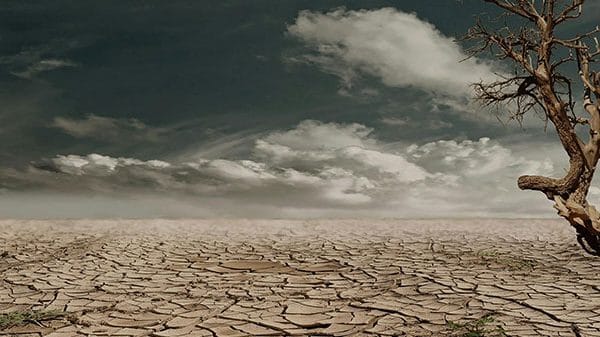In Diffa, one of the poorest regions of Niger, climate change has led to more frequent droughts and floods that have created severe food insecurity and malnutrition. But despite entrenched gender inequality, communities in Diffa are seeing what happens when women lead and power resilient climate adaptation.
Women small-scale farmers have stepped up and joined forces to change the landscape of possibility. With support from local civil-society and aid organizations, these women learned about climate change, found new ways to collect and conserve rainwater, and scheduled plantings of millet, okra, and peanuts for when rain was predicted.
They set aside savings against anticipated bad weather. They convinced the local government to build new wells. Today they have a voice in the local government’s scenario planning and spending decisions. Their lives, livelihoods, families, and communities are at less risk from climate change and from hunger.
In order for this story to become the rule instead of the exception, we desperately need to scale up this proven strategy: integrated climate and food-security responses that are locally led – and developed by and for women.
Woman suffer disproportionately from climate change
New research shows lethal intersections between extreme weather, hunger and gender inequality. As with poverty, women suffer disproportionately from climate change and from hunger.
During an extreme weather event, women – whether they are refugees in Uganda, earthquake survivors in Nepal, or drought sufferers in Honduras – eat less, grow comparatively less food, and are more likely to die than men.
Women remain chronically underrepresented in disaster planning and they are overwhelmingly less likely than men to be asked about their needs. Without a seat at scenario-planning tables, women are unable to access the same climate information, support, or leadership and financial opportunities as men.
The world is investing far too little in helping people cope with, and build longer-term resilience to, climate change. Response planning still treats increasingly frequent extreme weather events as point-in-time incidents that each need a timebound follow-up – when research shows that each extreme weather event impacts people’s food security for up to five years. Weather extremes are the main driver of hunger in 18 countries where 72 million people face acute climate change.
Heat stress and flooding widen the income gap between men and women by $53 billion every year. Extreme heat causes women to lose 8 percentage points more income than men do; flooding causes women to lose 3% more production. And because women have less access to climate information and to digital technology, it’s harder for them to take action to react to or guard against climate shocks.
Persistent gender inequalities mean that food insecurity affects women more than men in every hunger region. In Honduras’s Dry Corridor, one of the most climate-vulnerable places in the world, 61% of women are in food crisis, but only 11% of men.
In Zimbabwe, one woman told CARE, “Children and men eat first and I will eat after they have been fed.” Yet, because women are likely to be both growing and buying families’ food, when they lose production and income there is less food for everyone.
How women farmers are creating their own sustainable future
When women lead, the story changes. In mountainous northern Vietnam, women small-scale farmers are sharing seeds to shift to drought-resistant crops, rotating maize and peanut production to regenerate soil, and using indigenous plants as compost.
Women in Zimbabwe who had resources and support to plan for their changing environment organized to build new water-harvesting tools after recurring droughts dried up their old wells. “Our livestock no longer have to travel over 5 kilometers in search of water,” another Zimbabwean woman told CARE. “We now have good nutrition, and we can sell excess vegetables and get money for our village lending and savings as well as for school fees.”
Lasting hunger eradication will require shifting from growth-centric policies to those that prioritize equality and sustainability. In economies where gross domestic product (GDP) is growing but inequality is high, hunger goes up, not down. In 57 economies around the world, GDP is growing and so is hunger.
According to the Food and Agriculture Organization (FAO), there would be 45 million fewer hungry people in the world if global food systems treated men and women equally. Evidence shows that every dollar spent on truly inclusive local scenario planning saves $4 in potential losses and that women lead the way to better, faster responses.
In Malawi, each dollar invested in helping women in local savings groups get upskilled and represented in local disaster planning yielded $29. In the Philippines and nine other countries, women-led organizations are leading pioneering, locally owned response platforms that adeptly assess and respond to climate and other crises.
In Timor-Leste, women who joined forces now sit on village disaster-planning committees. They protect food supplies and important family documents from flood damage, save money in preparedness funds, and spread the word when extreme weather is forecast.
“In the past men were the chiefs and sat in parliament, and we women had to be in the kitchen,” one woman told CARE. “Now we have formed this group through our own initiative. We are not asking for handouts or airplanes or cars – we are asking for our voice to be heard.”
The world needs to hear their voices. Women tell CARE that the biggest challenges they face today relate to climate change and hunger: food insecurity, lack of clean water, drought, conflict, pests.
It’s not enough for planners to say we look at big data, collect feedback, engage community participation. Building resilience requires integrating adaptation into sustainable local and national planning. And it requires proactively asking, and listening to, the women who have lived experience on the frontlines of crisis and response.
This article previously appeared in the World Economic Forum.






